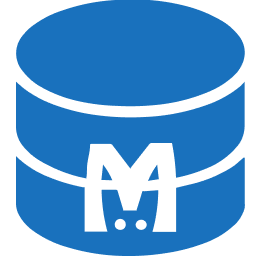You are looking at the documentation of a prior release. To read the documentation of the latest release, please
visit here.
New to KubeDB? Please start here.
Vertical Scale Cassandra Topology Cluster
This guide will show you how to use KubeDB Ops-manager operator to update the resources of a Cassandra topology cluster.
Before You Begin
At first, you need to have a Kubernetes cluster, and the
kubectlcommand-line tool must be configured to communicate with your cluster. If you do not already have a cluster, you can create one by using kind.Install
KubeDBProvisioner and Ops-manager operator in your cluster following the steps here.You should be familiar with the following
KubeDBconcepts:
To keep everything isolated, we are going to use a separate namespace called demo throughout this tutorial.
$ kubectl create ns demo
namespace/demo created
Note: YAML files used in this tutorial are stored in docs/examples/cassandra directory of kubedb/docs repository.
Apply Vertical Scaling on Topology Cluster
Here, we are going to deploy a Cassandra topology cluster using a supported version by KubeDB operator. Then we are going to apply vertical scaling on it.
Prepare Cassandra Topology Cluster
Now, we are going to deploy a Cassandra topology cluster database with version 5.0.3.
Deploy Cassandra Topology Cluster
In this section, we are going to deploy a Cassandra topology cluster. Then, in the next section we will update the resources of the database using CassandraOpsRequest CRD. Below is the YAML of the Cassandra CR that we are going to create,
apiVersion: kubedb.com/v1alpha2
kind: Cassandra
metadata:
name: cassandra-prod
namespace: demo
spec:
version: 5.0.3
topology:
rack:
- name: r0
replicas: 2
podTemplate:
spec:
containers:
- name: cassandra
resources:
limits:
memory: 2Gi
cpu: 2
requests:
memory: 1Gi
cpu: 1
storage:
accessModes:
- ReadWriteOnce
resources:
requests:
storage: 1Gi
storageType: Durable
deletionPolicy: WipeOut
Let’s create the Cassandra CR we have shown above,
$ kubectl create -f https://github.com/kubedb/docs/raw/v2025.7.31/docs/examples/cassandra/scaling/cassandra-topology.yaml
cassandra.kubedb.com/cassandra-prod created
Now, wait until cassandra-prod has status Ready. i.e,
$ kubectl get cas -n demo -w
NAME TYPE VERSION STATUS AGE
cassandra-prod kubedb.com/v1alpha2 5.0.3 Provisioning 22s
cassandra-prod kubedb.com/v1alpha2 5.0.3 Provisioning 45s
.
.
cassandra-prod kubedb.com/v1alpha2 5.0.3 Ready 104s
Let’s check the Pod containers resources of the Cassandra topology cluster. Run the following command to get the resources of the containers of the Cassandra topology cluster
$ kubectl get pod -n demo cassandra-prod-rack-r0-0 -o json | jq '.spec.containers[].resources'
{
"limits": {
"cpu": "2",
"memory": "2Gi"
},
"requests": {
"cpu": "1",
"memory": "1Gi"
}
}
We are now ready to apply the CassandraOpsRequest CR to update the resources of this database.
Vertical Scaling
Here, we are going to update the resources of the topology cluster to meet the desired resources after scaling.
Create CassandraOpsRequest
In order to update the resources of the database, we have to create a CassandraOpsRequest CR with our desired resources. Below is the YAML of the CassandraOpsRequest CR that we are going to create,
apiVersion: ops.kubedb.com/v1alpha1
kind: CassandraOpsRequest
metadata:
name: cassandra-vertical-scale
namespace: default
spec:
type: VerticalScaling
databaseRef:
name: cassandra-prod
verticalScaling:
node:
resources:
requests:
memory: "3Gi"
cpu: "2"
limits:
memory: "4Gi"
cpu: "3"
timeout: 5m
apply: IfReady
Here,
spec.databaseRef.namespecifies that we are performing vertical scaling operation oncassandra-prodcluster.spec.typespecifies that we are performingVerticalScalingon cassandra.spec.VerticalScaling.nodespecifies the desired resources after scaling.
Let’s create the CassandraOpsRequest CR we have shown above,
$ kubectl apply -f https://github.com/kubedb/docs/raw/v2025.7.31/docs/examples/cassandra/scaling/vertical-scaling/cassandra-vertical-scaling-topology.yaml
cassandraopsrequest.ops.kubedb.com/casops-vscale-topology created
Verify Cassandra Topology cluster resources updated successfully
If everything goes well, KubeDB Ops-manager operator will update the resources of Cassandra object and related PetSets and Pods.
Let’s wait for CassandraOpsRequest to be Successful. Run the following command to watch CassandraOpsRequest CR,
$ kubectl get cassandraopsrequest -n demo
NAME TYPE STATUS AGE
cassandra-vertical-scale VerticalScaling Successful 3m56s
We can see from the above output that the CassandraOpsRequest has succeeded. If we describe the CassandraOpsRequest we will get an overview of the steps that were followed to scale the cluster.
$ kubectl describe cassandraopsrequest -n demo cassandra-vertical-scale
Name: cassandra-vertical-scale
Namespace: demo
Labels: <none>
Annotations: <none>
API Version: ops.kubedb.com/v1alpha1
Kind: CassandraOpsRequest
Metadata:
Creation Timestamp: 2025-07-18T08:35:29Z
Generation: 1
Resource Version: 8364
UID: 282858bc-553d-487d-aad5-2026a5dd6a9e
Spec:
Apply: IfReady
Database Ref:
Name: cassandra-prod
Timeout: 5m
Type: VerticalScaling
Vertical Scaling:
Node:
Resources:
Limits:
Cpu: 3
Memory: 4Gi
Requests:
Cpu: 2
Memory: 3Gi
Status:
Conditions:
Last Transition Time: 2025-07-18T08:35:29Z
Message: Cassandra ops-request has started to vertically scaling the Cassandra nodes
Observed Generation: 1
Reason: VerticalScaling
Status: True
Type: VerticalScaling
Last Transition Time: 2025-07-18T08:35:32Z
Message: Successfully updated PetSets Resources
Observed Generation: 1
Reason: UpdatePetSets
Status: True
Type: UpdatePetSets
Last Transition Time: 2025-07-18T08:38:18Z
Message: Successfully Restarted Pods With Resources
Observed Generation: 1
Reason: RestartPods
Status: True
Type: RestartPods
Last Transition Time: 2025-07-18T08:35:38Z
Message: get pod; ConditionStatus:True; PodName:cassandra-prod-rack-r0-0
Observed Generation: 1
Status: True
Type: GetPod--cassandra-prod-rack-r0-0
Last Transition Time: 2025-07-18T08:35:38Z
Message: evict pod; ConditionStatus:True; PodName:cassandra-prod-rack-r0-0
Observed Generation: 1
Status: True
Type: EvictPod--cassandra-prod-rack-r0-0
Last Transition Time: 2025-07-18T08:35:43Z
Message: running pod; ConditionStatus:False
Observed Generation: 1
Status: False
Type: RunningPod
Last Transition Time: 2025-07-18T08:36:18Z
Message: get pod; ConditionStatus:True; PodName:cassandra-prod-rack-r0-1
Observed Generation: 1
Status: True
Type: GetPod--cassandra-prod-rack-r0-1
Last Transition Time: 2025-07-18T08:36:18Z
Message: evict pod; ConditionStatus:True; PodName:cassandra-prod-rack-r0-1
Observed Generation: 1
Status: True
Type: EvictPod--cassandra-prod-rack-r0-1
Last Transition Time: 2025-07-18T08:38:18Z
Message: Successfully completed the vertical scaling for Cassandra
Observed Generation: 1
Reason: Successful
Status: True
Type: Successful
Observed Generation: 1
Phase: Successful
Events:
Type Reason Age From Message
---- ------ ---- ---- -------
Normal Starting 36m KubeDB Ops-manager Operator Start processing for CassandraOpsRequest: demo/cassandra-vertical-scale
Normal Starting 36m KubeDB Ops-manager Operator Pausing Cassandra databse: demo/cassandra-prod
Normal Successful 36m KubeDB Ops-manager Operator Successfully paused Cassandra database: demo/cassandra-prod for CassandraOpsRequest: cassandra-vertical-scale
Normal UpdatePetSets 36m KubeDB Ops-manager Operator Successfully updated PetSets Resources
Warning get pod; ConditionStatus:True; PodName:cassandra-prod-rack-r0-0 36m KubeDB Ops-manager Operator get pod; ConditionStatus:True; PodName:cassandra-prod-rack-r0-0
Warning evict pod; ConditionStatus:True; PodName:cassandra-prod-rack-r0-0 36m KubeDB Ops-manager Operator evict pod; ConditionStatus:True; PodName:cassandra-prod-rack-r0-0
Warning running pod; ConditionStatus:False 36m KubeDB Ops-manager Operator running pod; ConditionStatus:False
Warning get pod; ConditionStatus:True; PodName:cassandra-prod-rack-r0-1 36m KubeDB Ops-manager Operator get pod; ConditionStatus:True; PodName:cassandra-prod-rack-r0-1
Warning evict pod; ConditionStatus:True; PodName:cassandra-prod-rack-r0-1 36m KubeDB Ops-manager Operator evict pod; ConditionStatus:True; PodName:cassandra-prod-rack-r0-1
Warning get pod; ConditionStatus:True; PodName:cassandra-prod-rack-r0-0 35m KubeDB Ops-manager Operator get pod; ConditionStatus:True; PodName:cassandra-prod-rack-r0-0
Warning evict pod; ConditionStatus:True; PodName:cassandra-prod-rack-r0-0 35m KubeDB Ops-manager Operator evict pod; ConditionStatus:True; PodName:cassandra-prod-rack-r0-0
Warning get pod; ConditionStatus:True; PodName:cassandra-prod-rack-r0-1 34m KubeDB Ops-manager Operator get pod; ConditionStatus:True; PodName:cassandra-prod-rack-r0-1
Warning evict pod; ConditionStatus:True; PodName:cassandra-prod-rack-r0-1 34m KubeDB Ops-manager Operator evict pod; ConditionStatus:True; PodName:cassandra-prod-rack-r0-1
Normal RestartPods 34m KubeDB Ops-manager Operator Successfully Restarted Pods With Resources
Normal Starting 34m KubeDB Ops-manager Operator Resuming Cassandra database: demo/cassandra-prod
Normal Successful 34m KubeDB Ops-manager Operator Successfully resumed Cassandra database: demo/cassandra-prod for CassandraOpsRequest: cassandra-vertical-scale 2m18s KubeDB Ops-manager Operator Successfully resumed Cassandra database: demo/cassandra-prod for CassandraOpsRequest: casops-vscale-topology
Now, we are going to verify from one of the Pod yaml whether the resources of the topology cluster has updated to meet up the desired state, Let’s check,
$ kubectl get pod -n demo cassandra-prod-rack-r0-0 -o json | jq '.spec.containers[].resources'
{
"limits": {
"cpu": "3",
"memory": "4Gi"
},
"requests": {
"cpu": "2",
"memory": "3Gi"
}
}
The above output verifies that we have successfully scaled up the resources of the Cassandra topology cluster.
Cleaning Up
To clean up the Kubernetes resources created by this tutorial, run:
kubectl delete cas -n demo cassandra-prod
kubectl delete cassandraopsrequest -n demo cassandra-vertical-scale
kubectl delete ns demo
Next Steps
- Detail concepts of Cassandra object.
- Monitor your Cassandra database with KubeDB using out-of-the-box Prometheus operator.
- Want to hack on KubeDB? Check our contribution guidelines.



































